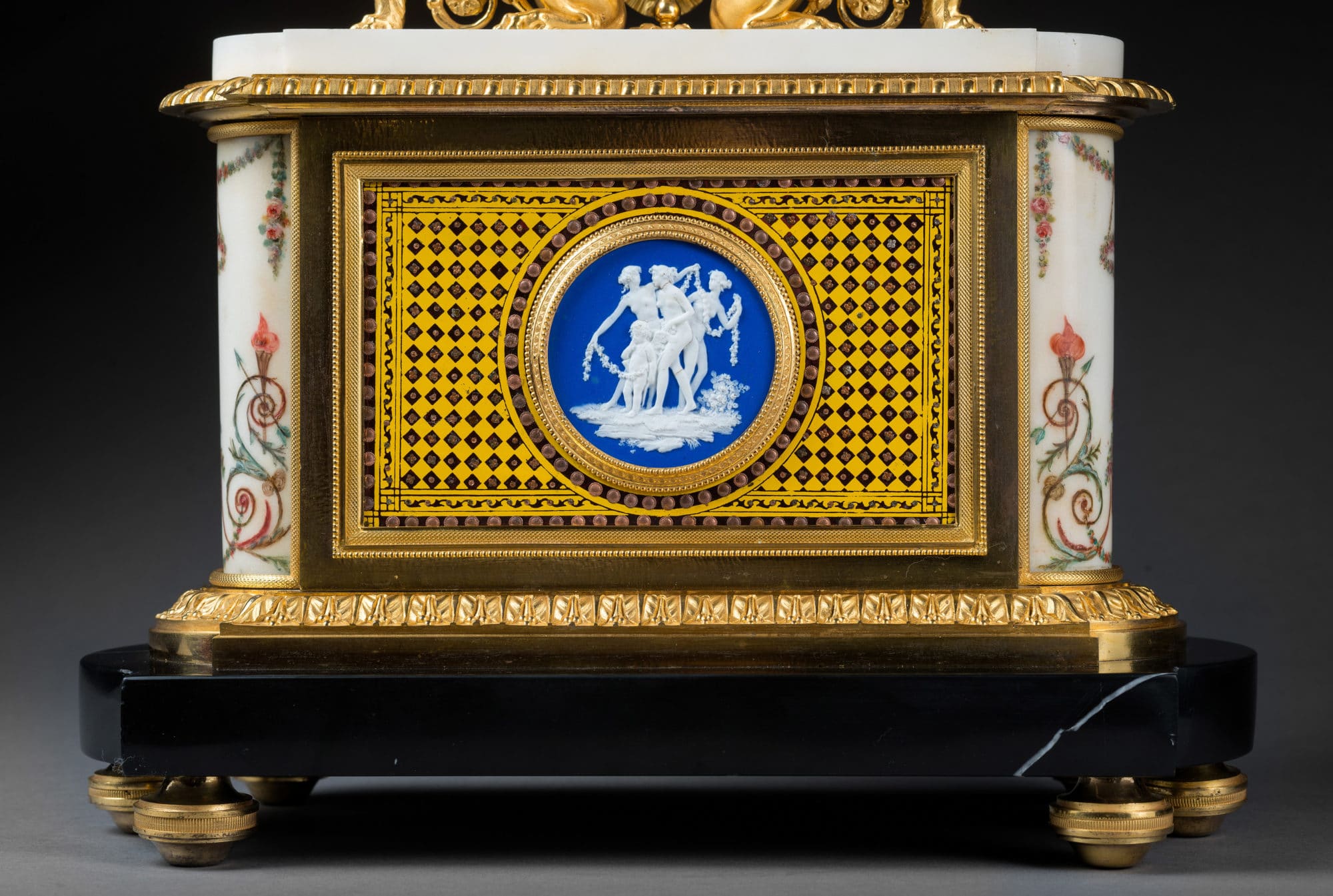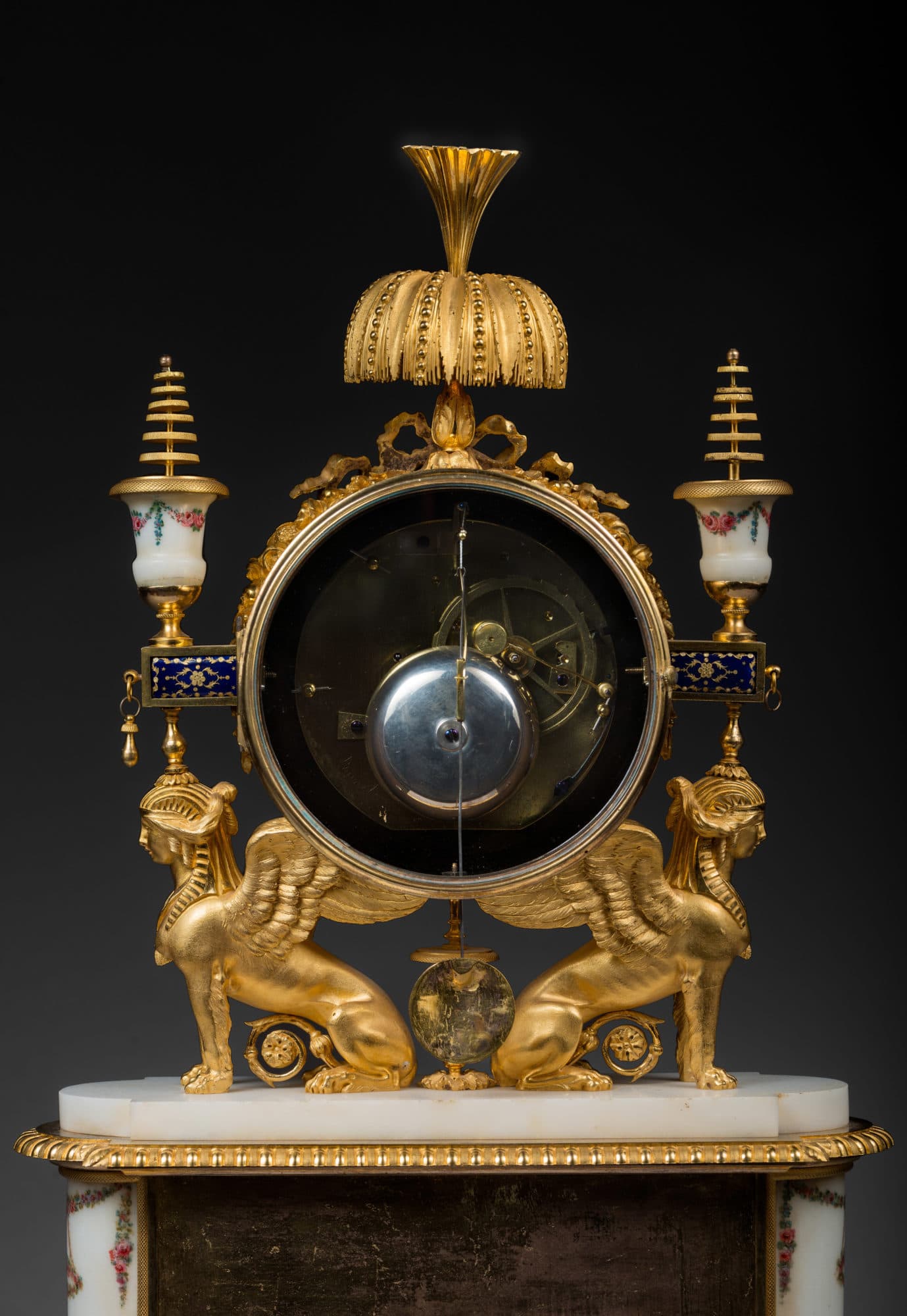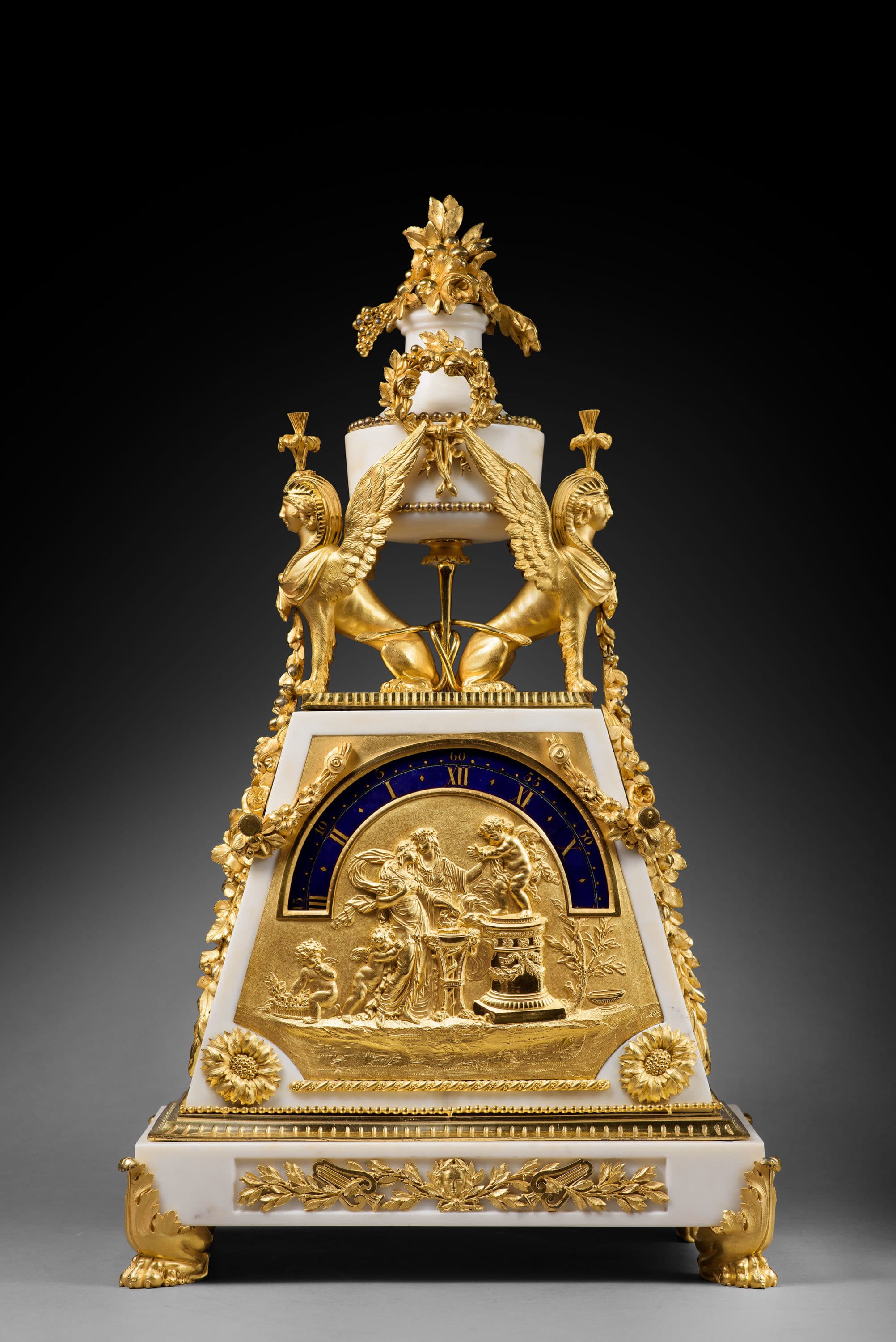Rare Sphinx Mantle Clock

Dial signed “Revel à Paris” by the clockmaker Joseph-Marie Revel
Paris, Louis XVI period, circa 1785
The enamel dial, with Arabic hours and minutes, is contained within a drum-shaped gilt bronze case adorned with ormolu flower garlands and a ribbon bow; at its summit there is a finely chased ormolu plume. On either side of the dial, two winged sphinxes coiffed with nemes headdresses support entablatures decorated with enamel plaques, which are surmounted by topiary vases. The base, with rounded white marble sides that are finely painted with polychrome arabesque motifs, has a central paste-decorated verre églomisé plaque centred by a blue imitation Wedgwood bisque medallion with a low-relief depiction of the three Graces. Stylised gilt bronze friezes provide highlights; the base is of black marble.
Discover our entire collection of antique mantel clocks for sale online or at the gallery.
La Pendulerie is the specialist in fine and rare antique clocks, based in Paris.
This clock’s elegant design places it among the most remarkable animal-themed clocks made during the last quarter of the 18th century in Paris. The rare known similar examples feature the same combination of rare and precious materials. One example was formerly in the collection of the Radziwill Princes, in the Château d’Ermenonville (sold in Paris by Me Ader on March 8, 1933, lot 31); a second piece, with dial signed Lechopié à Paris, was formerly in the collection of Mrs. Thelma Chrysler Foy (Parke-Bernet Galleries, New York, May 15 and 16, 1959, lot 295); a third is illustrated in P. Kjellberg, Encyclopédie de la pendule française du Moyen Age au XXe siècle, Paris, 1997, p. 281; one last example, whose dial is signed F.L. Godon, is in the Spanish Royal Collections (illustrated in J. Ramon Colon de Carvajal, Catalogo de Relojes del Patrimonio Nacional, Madrid, 1987, p. 77, catalogue n° 61).
Joseph-Marie Revel (? - 1811)
Very little is known about this clockmaker, who was nevertheless very famous during his lifetime. Briefly mentioned in the Tardy’s Dictionnaire des horlogers under the name of Joseph Revel, he was actually named Joseph-Marie; he died in Paris in 1811. After becoming a master on August 12, 1775, he opened a workshop in the Vieille rue du Temple, and was mentioned in the Palais Royal from 1787 to 1790, in the Palais Egalité around 1800, and in the Palais Tribunat from 1804 to 1806. Several probate inventories dating from the early decades of the 19th century mention a number of his clocks; a clock by Revel was estimated in 1817 after the death of Adélaïde de Lespinasse-Langeac, the wife of the chevalier de Costalin; in 1821 another was in the collection of the Countess de Medem, Anne-Charlotte-Dorothée, the widow of the powerful Duke de Courlande.












